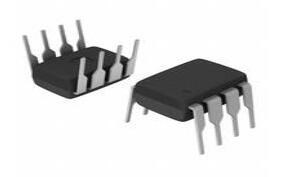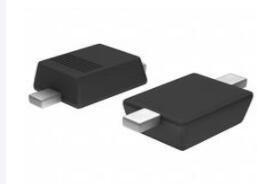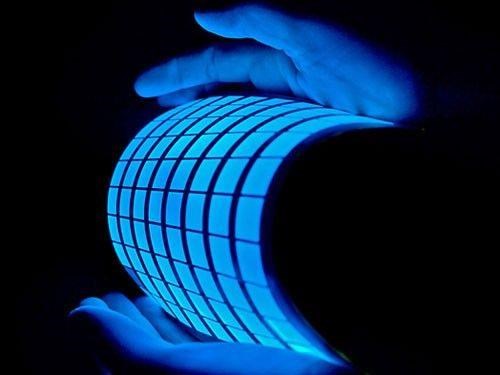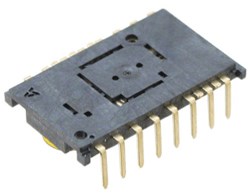The Guide to BFW10 30V N-Channel JFET [Datasheet]
BFW10 datasheet pdf and Unclassified product details from TEXAS INSTRUMENTS INC stock available at Utmel









The BFW10 is an N-Channel JFET Transistor that is used to amplify or switch electronic signals as well as electrical power. This article will cover guide details for your reference.

TRICK To Identify Terminals of BFW 10/11 || Best and Easy Way
What is BFW10?
The BFW10 is an N-Channel JFET Transistor that is used to amplify or switch electronic signals as well as electrical power. It's made of semiconductor material and has at least three terminals for connecting to a circuit outside of it. The current through another pair of terminals is controlled by a voltage or current applied to one pair of transistor terminals,
A transistor can magnify a signal because the regulated (output) power can be higher than the controlling (input) power, Some transistors are still packaged separately nowadays, but many more are included in integrated circuits.
BFW10 Pinout

BFW10 Pinout
BFW10 Maximum Ratings
Drain-Source Voltage : Vds = 30 Vdc
Drain-Gate Voltage : Vdg = 30 Vdc
Reverse Gate-Source Voltage : Vgsr = -30 Vdc
Forward Gate Current : Igf = 10 mADC
Specifications
- TypeParameter
- Surface Mount
having leads that are designed to be soldered on the side of a circuit board that the body of the component is mounted on.
NO - Operating Temperature (Max.)175°C
- Reach Compliance Code
Reach Compliance Code refers to a designation indicating that electronic components meet the requirements set by the Registration, Evaluation, Authorization, and Restriction of Chemicals (REACH) regulation in the European Union. It signifies that the manufacturer has assessed and managed the chemical substances within the components to ensure safety and environmental protection. This code is vital for compliance with regulations aimed at minimizing risks associated with hazardous substances in electronic products.
not_compliant - Polarity/Channel Type
In electronic components, the parameter "Polarity/Channel Type" refers to the characteristic that determines the direction of current flow or the type of signal that can be accommodated by the component. For components like diodes and transistors, polarity indicates the direction in which current can flow through the component, such as forward bias or reverse bias for diodes. For components like MOSFETs or JFETs, the channel type refers to whether the component is an N-channel or P-channel device, which determines the type of charge carriers that carry current through the component. Understanding the polarity or channel type of a component is crucial for proper circuit design and ensuring that the component is connected correctly to achieve the desired functionality.
N-CHANNEL - FET Technology
Field-Effect Transistor (FET) technology is a type of semiconductor device commonly used in electronic components such as transistors and integrated circuits. FETs operate by controlling the flow of current through a semiconductor channel using an electric field. There are several types of FETs, including Metal-Oxide-Semiconductor FETs (MOSFETs) and Junction FETs (JFETs), each with its own characteristics and applications. FET technology offers advantages such as high input impedance, low power consumption, and fast switching speeds, making it suitable for a wide range of electronic devices and circuits. Overall, FET technology plays a crucial role in modern electronics by enabling efficient and reliable signal processing and amplification.
JUNCTION - Power Dissipation-Max (Abs)
Power Dissipation-Max (Abs) refers to the maximum amount of power that an electronic component can dissipate without undergoing thermal damage or degradation. This value is crucial for ensuring reliable operation, as exceeding it can result in overheating and failure. It is typically specified in watts and serves as a critical parameter for designers to determine proper heat management strategies in circuits. Properly managing the power dissipation is essential for the longevity and performance of electronic devices.
0.25W - RoHS Status
RoHS means “Restriction of Certain Hazardous Substances” in the “Hazardous Substances Directive” in electrical and electronic equipment.
Non-RoHS Compliant
BFW10 Features
Type Designator: BFW10
Type of Transistor: JFET
Type of Control Channel: N -Channel
Maximum Power Dissipation (Pd): 0.3 W
Maximum Drain-Source Voltage |Vds|: 30 V
Maximum Gate-Source Voltage |Vgs|: 30 V
Maximum Drain Current |Id|: 0.01 A
Maximum Junction Temperature (Tj): 150 °C
Maximum Drain-Source On-State Resistance (Rds): 500 Ohm
Package: TO-72
BFW10 Applications
BFW10 is employed as voltage-variable resistors (WRs) in operational amplifiers (op-amps), tone controls, and logic circuits, as well as for mixer operation on FM and TV receivers.
BFW10 Circuit Diagram

BFW10 Circuit Diagram
BFW10 Equivalents
PTF10149 , RJK0234DNS , SPP100N06S2-05 , SPB100N06S2-05 , SSM5N03FE , STK0260D , SWD5N65K , VN10KLS , BS170 , BFW11 , CS3N20ATH , FHP3205 , FS10KM-12 , FS10KM-2 , FTP50N20R , JCS12N65T , JCS12N65CT
What are JFET transistors used for?
JFET stands for "junction field-effect transistor. " and it can be utilized for anything that a standard MOSFET can do. The JFET, on the other hand, lacks a gate oxide and hence operates more like a bipolar junction device, with a higher gate current than a MOSFET.
JFETs are commonly used as low noise amplifiers in the front ends of extremely sensitive circuits. The 1/f noise is smaller because they don't have gate oxide. They're also sometimes utilized as big resistors, like MOSFET s in depletion mode.
BFW10 Dimensions

BFW10 Dimensions
BFW10 Manufacturer
Texas Instruments Incorporated (TI) is an American technology company headquartered in Dallas, Texas, that designs and manufactures semiconductors and various integrated circuits, which it sells to electronics designers and manufacturers globally.
BFW10 Datasheet
BFW10 Datasheet for your reference
What is the use of BFW10?
BFW10 is a semiconductor device used to amplify or switch electronic signals and electrical power.
What type of transistor is the BFW10?
N-Channel JFET Transistor
N-Channel JFET Transistor
The BFW10 Drain Current-Max is 0.02 A.
What is the max operating temperature of BFW10?
175°C
What is the size of BFW10?
TO-72
 LD1117V33 Regulator: Pinout, Applications and Datasheet
LD1117V33 Regulator: Pinout, Applications and Datasheet18 October 20231489
 LM4562 Operational Amplifier: Pinout, Features and Datasheet
LM4562 Operational Amplifier: Pinout, Features and Datasheet17 September 20216704
 ATtiny13A 8-Bit Microcontroller: Datasheet, Specifications, Pinout
ATtiny13A 8-Bit Microcontroller: Datasheet, Specifications, Pinout28 September 20215244
 AD590KF vs Thermocouples Comparison
AD590KF vs Thermocouples Comparison23 July 202545
 Unveiling the SANYO LC87F5R96B 8-Bit Microcontroller: An In-depth Exploration
Unveiling the SANYO LC87F5R96B 8-Bit Microcontroller: An In-depth Exploration29 February 202485
![TLP521-2XGB Optocoupler: TLP521 Series, Datasheet, Pinout [FAQ]](https://res.utmel.com/Images/Article/03d1cf24-6a28-4952-9a58-b45ee6eedbf4.jpg) TLP521-2XGB Optocoupler: TLP521 Series, Datasheet, Pinout [FAQ]
TLP521-2XGB Optocoupler: TLP521 Series, Datasheet, Pinout [FAQ]06 January 20231279
 TDA7492P Audio Amplifier: Datasheet, Applications Circuit, and Pinout
TDA7492P Audio Amplifier: Datasheet, Applications Circuit, and Pinout26 July 20213526
 PMEG6010CEJ Schottky Diode: Datasheet PDF, Application, Alternative
PMEG6010CEJ Schottky Diode: Datasheet PDF, Application, Alternative15 February 20221625
 India's Bold Leap Towards Semiconductor Supremacy
India's Bold Leap Towards Semiconductor Supremacy15 September 20232256
 Introduction to Distribution Transformer
Introduction to Distribution Transformer24 February 20217296
 Utmel Christmas and New Year Carnival
Utmel Christmas and New Year Carnival07 December 20202375
 How Embedded Computers Drive Innovation in 2025
How Embedded Computers Drive Innovation in 202517 July 2025487
 What is OLED?
What is OLED?16 March 20215387
 Audio Transformer-Types, Functions and Working
Audio Transformer-Types, Functions and Working27 January 202111615
 What is an Optical Sensor?
What is an Optical Sensor?19 March 20216258
 Global Ceramic Capacitors Market In-Depth Analysis to 2024
Global Ceramic Capacitors Market In-Depth Analysis to 202424 November 20234235
TEXAS INSTRUMENTS INC
In Stock
United States
China
Canada
Japan
Russia
Germany
United Kingdom
Singapore
Italy
Hong Kong(China)
Taiwan(China)
France
Korea
Mexico
Netherlands
Malaysia
Austria
Spain
Switzerland
Poland
Thailand
Vietnam
India
United Arab Emirates
Afghanistan
Åland Islands
Albania
Algeria
American Samoa
Andorra
Angola
Anguilla
Antigua & Barbuda
Argentina
Armenia
Aruba
Australia
Azerbaijan
Bahamas
Bahrain
Bangladesh
Barbados
Belarus
Belgium
Belize
Benin
Bermuda
Bhutan
Bolivia
Bonaire, Sint Eustatius and Saba
Bosnia & Herzegovina
Botswana
Brazil
British Indian Ocean Territory
British Virgin Islands
Brunei
Bulgaria
Burkina Faso
Burundi
Cabo Verde
Cambodia
Cameroon
Cayman Islands
Central African Republic
Chad
Chile
Christmas Island
Cocos (Keeling) Islands
Colombia
Comoros
Congo
Congo (DRC)
Cook Islands
Costa Rica
Côte d’Ivoire
Croatia
Cuba
Curaçao
Cyprus
Czechia
Denmark
Djibouti
Dominica
Dominican Republic
Ecuador
Egypt
El Salvador
Equatorial Guinea
Eritrea
Estonia
Eswatini
Ethiopia
Falkland Islands
Faroe Islands
Fiji
Finland
French Guiana
French Polynesia
Gabon
Gambia
Georgia
Ghana
Gibraltar
Greece
Greenland
Grenada
Guadeloupe
Guam
Guatemala
Guernsey
Guinea
Guinea-Bissau
Guyana
Haiti
Honduras
Hungary
Iceland
Indonesia
Iran
Iraq
Ireland
Isle of Man
Israel
Jamaica
Jersey
Jordan
Kazakhstan
Kenya
Kiribati
Kosovo
Kuwait
Kyrgyzstan
Laos
Latvia
Lebanon
Lesotho
Liberia
Libya
Liechtenstein
Lithuania
Luxembourg
Macao(China)
Madagascar
Malawi
Maldives
Mali
Malta
Marshall Islands
Martinique
Mauritania
Mauritius
Mayotte
Micronesia
Moldova
Monaco
Mongolia
Montenegro
Montserrat
Morocco
Mozambique
Myanmar
Namibia
Nauru
Nepal
New Caledonia
New Zealand
Nicaragua
Niger
Nigeria
Niue
Norfolk Island
North Korea
North Macedonia
Northern Mariana Islands
Norway
Oman
Pakistan
Palau
Palestinian Authority
Panama
Papua New Guinea
Paraguay
Peru
Philippines
Pitcairn Islands
Portugal
Puerto Rico
Qatar
Réunion
Romania
Rwanda
Samoa
San Marino
São Tomé & Príncipe
Saudi Arabia
Senegal
Serbia
Seychelles
Sierra Leone
Sint Maarten
Slovakia
Slovenia
Solomon Islands
Somalia
South Africa
South Sudan
Sri Lanka
St Helena, Ascension, Tristan da Cunha
St. Barthélemy
St. Kitts & Nevis
St. Lucia
St. Martin
St. Pierre & Miquelon
St. Vincent & Grenadines
Sudan
Suriname
Svalbard & Jan Mayen
Sweden
Syria
Tajikistan
Tanzania
Timor-Leste
Togo
Tokelau
Tonga
Trinidad & Tobago
Tunisia
Turkey
Turkmenistan
Turks & Caicos Islands
Tuvalu
U.S. Outlying Islands
U.S. Virgin Islands
Uganda
Ukraine
Uruguay
Uzbekistan
Vanuatu
Vatican City
Venezuela
Wallis & Futuna
Yemen
Zambia
Zimbabwe


